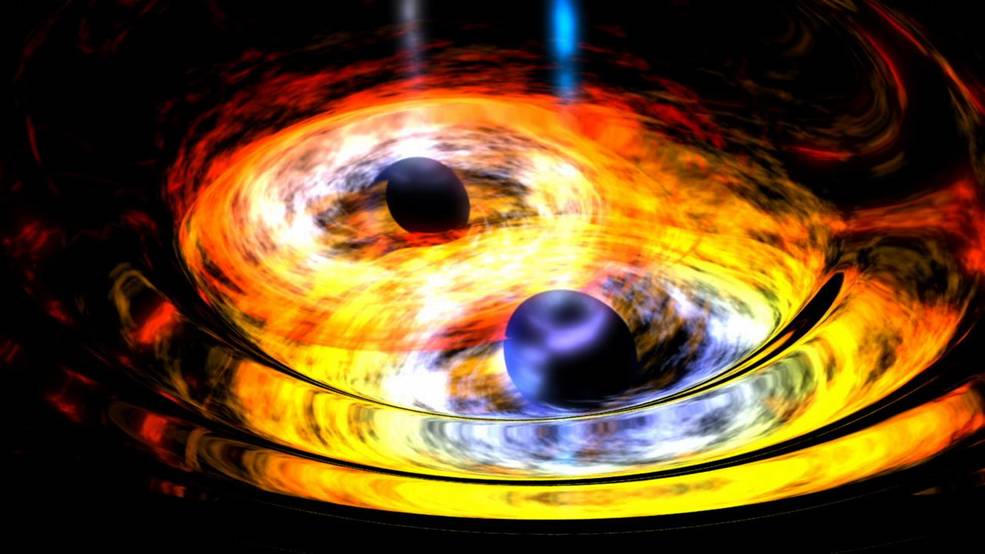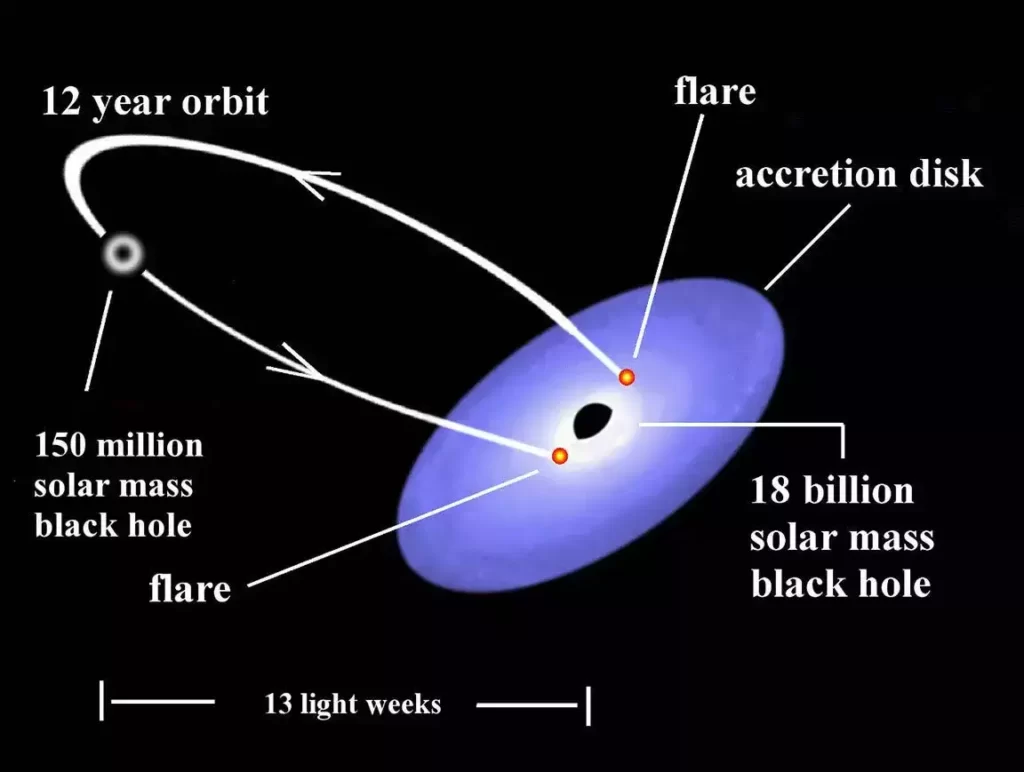In a outstanding cosmic display, the distant galaxy OJ287, situated 5 billion light-years away, illuminated with a burst of light that outshone our very own Milky Way galaxy by a staggering factor of 100.
Discovering such awe-inspiring phenomena in our huge universe is a rarity. In this extraordinary occurrence, the radiant flare emanated from a binary system harboring two black holes engaged in a captivating gravitational dance.
The extra diminutive black hole, boasting a mass roughly 150 million times that of our sun, orbits its colossal counterpart, which weighs a staggering 18 billion solar masses, at a velocity nearing the speed of light.
It is exactly this intricate dance between the two black holes that ignited the luminous flare, as unveiled in a recent study published in the esteemed Monthly Notices of the Royal Astronomical Society in March.
A Cosmic Burst Illuminating the Darkness in galaxy
Astrologers recorded this distinctive burst in February 2022, a stunning event that occurred when the smaller black hole collided with a gas disk enveloping its bigger companion, as revealed by the scientists involved in the study.
The existence of gaseous disks, such as the one observed, is commonplace due to the gravitational force exerted by black holes—especially the supermassive variety hid on the core of galaxies like OJ287.
Their immense gravitational pull disintegrates stars and any other celestial objects unfortunate enough to venture too close. Consequently, the accretion disk, comprising gas remnants, stays as the sole vestige of such cataclysmic encounters.

Credits: NASA
As the smaller black hole hurtles through the accretion disk at a velocity nearing that of light, it absorbs a portion of the surrounding fuel, thereby igniting an explosive surge of radiation that’s ejected from its core.
“According to estimations, the flare materialized shortly after the smaller black hole assimilated a substantial influx of fresh gas during its descent,” acknowledged Mauri Valtonen, the lead author of the study and an esteemed researcher from the Tata Institute of Fundamental Research.
“It is precisely the ingestion process that results in the sudden intensification of OJ287’s luminosity. This very process is believed to fuel the powerful jet that emanates from the smaller black hole within OJ287,” Valtonen additional explained.

Also More: Cosmic Eureka Moment: James Webb Telescope Discovers Organic Molecule in Distant Galaxy
The End of an Unfortunate Streak
Remarkably, this remarkable event marked the first-ever direct observation of a flare originating from the smaller black hole within OJ287. The brevity of the spectacle, confined to a single day, explains why astronomers were unable to capture it till now.
“Although this phenomenon was predicted a decade ago, it had not been confirmed until this moment,” Valtonen remarked within the aforementioned statement. “It turns out that we simply experienced a stroke of misfortune. No one had observed OJ287 precisely during those nights when it staged its fleeting one-night performance.”
This occurrence stands as the primary observational evidence attesting to the existence of the smaller black hole. Prior to this revelation, its presence was only inferred through its gravitational impact on the larger black hole.
More specifically, the larger black hole emits immensely powerful radiation jets, and the distinctive oscillations observed inside these jets are attributed to the gravitational affect exerted by the smaller black hole.
Valtonen emphasized that the black holes are “so closely positioned in the sky that they merge into a single point when observed through our telescopes.”

Over the course of several decades, Valtonen and his team of dedicated researchers have observed numerous good flares originating from this captivating system. The initial profitable observation campaign took place in 1983, followed by subsequent endeavors in 1994, 1995, 2005, 2007, 2015, and 2019.
“The total count of predicted flares now amounts to 26, and nearly all of them have been witnessed,” affirmed Achamveedu Gopakumar, a co-author of the study affiliated with the Tata Institute of Fundamental Research.
These breathtaking bursts will persist as the smaller black hole continues its orbital trajectory around its larger companion. However, their occurrences will be irregular due to the oblong nature of the 12-year orbit, as outlined in the study.
Also More: Astronomers Stun the World with Unprecedented Image of a Black Hole’s Powerful Jet and Eerie Shadow!







